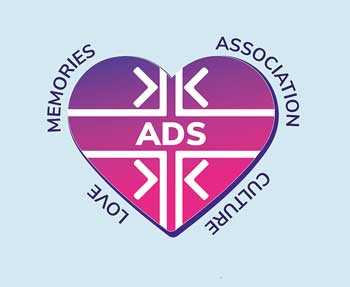Sunday Dec 21, 2025
Sunday Dec 21, 2025
Monday, 5 August 2019 00:00 - - {{hitsCtrl.values.hits}}
Many young people join advertising because they thinks it’s glamorous. The models, the films, the photo shoots – they think this is an exciting, glitzy industry. Once they are in the industry, some get frustrated. And leave. When I applied for my first job in advertising as an ‘account executive’, the interviewer asked me what I thought was the toughest job in the world. I thought about it and said – a post in the army or job in the police. He said no, the job of the account executive. I was surprised. I never thought of it as that tough. But anyway I got the job. And soon I understood what he meant. 
The pressure of deadlines, the egos of clients, the mood swings of your own colleagues, and the lack of knowledge of how to do things, all combined to make me feel initially lost and confused. And as a person in the lowest rung of the hierarchy my neck was getting totally wrung. And I did not even come in thinking it was a glamorous job. I knew it was going to be demanding. Only I never bargained for how tough it was really going to be. Over the years I found meaning in my job. And purpose. And am thankful for being in it. But many young bright people with verve, imagination and intelligence don’t get there. They leave. And the industry loses great talent.
So do ads really matter? And how does what people in advertising do, matter in a larger context of society, community and country?
Ads are parts of everyone’s life. Every so often, when I am in parties or social occasions, the topic turns to ads that played in our childhood and an otherwise dull monotone discussion gets lovely, exciting and colourful. People hum old jingles with passion. And narrate the entire story of the ad and how it caught their imagination and how they still recollect it fondly. People even remember brands that are no longer in the market place, if they had memorable ads. And everyone in the group, including the most reticent ones, have a silly grin on their faces, as they recall with childish delight, the details of these ads.
A common discussion for many of us are related to our India days with ads of Bajaj bulbs and tubes, Pan Pasand candy, Cadbury Dairy Milk and Hamara Bajaj getting regular mention. I once had a party where we played old ads on the screen to screeches of delight from all present. The superb imagination of several creative people in India in the ’90s and the hard work and smart judgement of those clients have produced timeless work which continue to provide joy and entertainment to many people years later.
These ads helped sell products. But they did more. They created bonds with many million consumers beyond the ambit of the commercial role they played. They became part of everlasting memories providing joy and merriment forever.
An ex-boss of mine M.G. Paramesawaran runs a regular workshop called ‘brands and culture’ where he shows how great brands reflect the changes in society. He traces using brand ‘Santoor’s advertising and makes a point on the changing faces of the Indian housewife. From 1985 to 2010. I worked on this brand and contributed to a small phase of change on the brand. The simple story of a ‘lady being mistaken for a college girl only for a little girl to call her mummy’ and the ensuing surprise at her younger looking skin. This story did not change but was constantly updated to reflect the changing housewife and is a great record of how ads matter. And how they are a true reflection of society and changes therein. 
As practitioners of advertising, one needs to look at pieces of work we do daily – an ad we design gets printed in the national press, a TV film gets national exposure. A POS item seemingly the least impactful screams for attention through a journey you make through any part of Sri Lanka. How many professions give you this opportunity to put out our ideas and expressive capabilities to be seen by large numbers of people, and through myriad mediums? And just like movie makers, a famous brand can give you recognition by association.
I was blessed to be invited to lay the foundation stone of a Buddhist temple in Sri Lanka. The monk who introduced me to the hundreds of locals in the temple said I was associated with the advertising of a famous brand here, one that shows an assertive housewife. Instantly there were smiles of recognition from all the locals there. They all smiled at me. And after the event many came to me and explained how they loved the ad and the brand. One’s creations in advertising make a greater impact on people’s hearts and minds than you realise.
Ads are parts of everyone’s life. Every so often, when I am in parties or social occasions, the topic turns to ads that played in our childhood and an otherwise dull monotone discussion gets lovely, exciting and colourful. People hum old jingles with passion. And narrate the entire story of the ad and how it caught their imagination and how they still recollect it fondly. People even remember brands that are no longer in the market place, if they had memorable ads. And everyone in the group, including the most reticent ones, have a silly grin on their faces, as they recall with childish delight, the details of these ads
The other place one can see the impact of one’s work is in focus groups. One can strategise on communication forever, but when a communication idea is received as you want it to be received, in a FGD, you get an instant gratification or find serious validation for your professional purpose. Finally when the brand moves from the shelves and the client gets his promotion thanks to your idea, it’s a great moment of triumph. But there are many other aspects to feeling the purpose of the role.
On 15 August 1988, India’s Independence Day, a film was released titled ‘mile sur mera tumhara’. This film was conceived by Piyush Pandey. And involved artists and celebrities from across India who came together to create a national integration masterpiece. This aroused a great sense of national pride. And arguably is one of the finest most memorable ‘ads’ for India. As an ad professional you can use your communication skills to create pieces that have large national impact beyond brands and products. You can even coalesce a nation together through inspiration and creative genius.
Social media provides ad professionals who have imagination and intent an opportunity to contribute to larger causes like never before. Now you can directly engage, converse and shape public opinion on large global platforms. Geography as they say is truly history. The hashtag culture opens up many avenues to do great creative work. One that impacts products and brands and even beyond to bring about sustainable social change.
Whether through the #metoo movement which has shone new light on women empowerment or others related to environment or sustainable development, if you are passionate about brands and/or social change, this is your time and chance to be in advertising and to do creative communications. And to impact minds and emotions of consumers and of society at large.
Advertising has always had an impact by reflecting social mores and by giving creative professionals an opportunity to express themselves through various mediums. Now more than ever before the opportunity and mediums exist to do work that really matters.
So find meaning, and be inspired to join this amazing industry and contribute to communications history of your society community and country. Maybe even of the world. Cause ‘ads do matter’.
(The writer is a marketing communications expert with over 20 years’ experience in multinational locations. He can be reached on [email protected].)